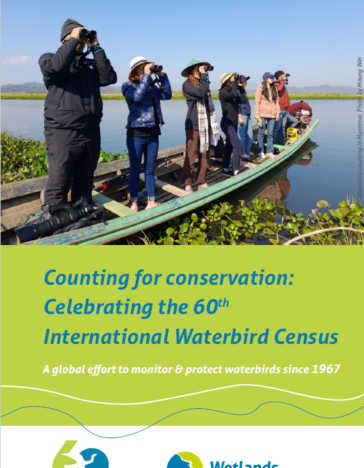
Counting for Conservation: Celebrating 60 years of the International Waterbird Census
Since 1967, tens of thousands of people have headed to wetlands every year around the world, taking part in the International Waterbird Census (IWC).
From coastal areas in northern Europe to tropical estuaries in Asia and Africa and across Latin America and the Caribbean, volunteers and professionals alike join this global citizen science effort.
Many waterbird species gather in huge numbers at wetlands in January and February, giving us a great opportunity to monitor the sizes, trends and changes in the distribution of waterbird populations, and to identify their key sites.
In a rapidly changing world, the IWC helps us monitor the health of our wetlands and waterbirds and take actions to manage them sustainably.
Over the last 60 years, the International Waterbird Census has grown into one of the world’s largest and longest-running biodiversity monitoring programmes – with counts in 189 countries and territories and more than 2 billion waterbirds recorded.

The International Waterbird Census does more than generate numbers. By connecting thousands of volunteers and local communities across continents, it not only tracks population trends at site, national, and population levels, but also links people with each other and with the seasonal rhythms of their wetlands.
In over 60 years, the IWC has shown us how waterbird numbers and distributions are changing.
- Conservation efforts pay off
Protection and management have helped certain species bounce back. Several goose species in Europe have increased thanks to coordinated conservation and sustainable harvest management. - But many are in decline
Particularly, waders show worrying downward trends, reflecting the pressures on wetlands, grasslands and tundra habitats along their flyways. - Waterbirds are responding to a changing world
Globally, waterbird distributions shift with temperature in temperate zones and rainfall in the tropics. By 2050, suitable wintering areas in Europe are predicted to extend northeastwards into the Baltic and southern Russia, while ranges in Africa may become increasingly fragmented.
By detecting declines in hunted species, tracking the impact of climate change and avian influenza, the data from the IWC is essential for guiding waterbird conservation policy and action.

